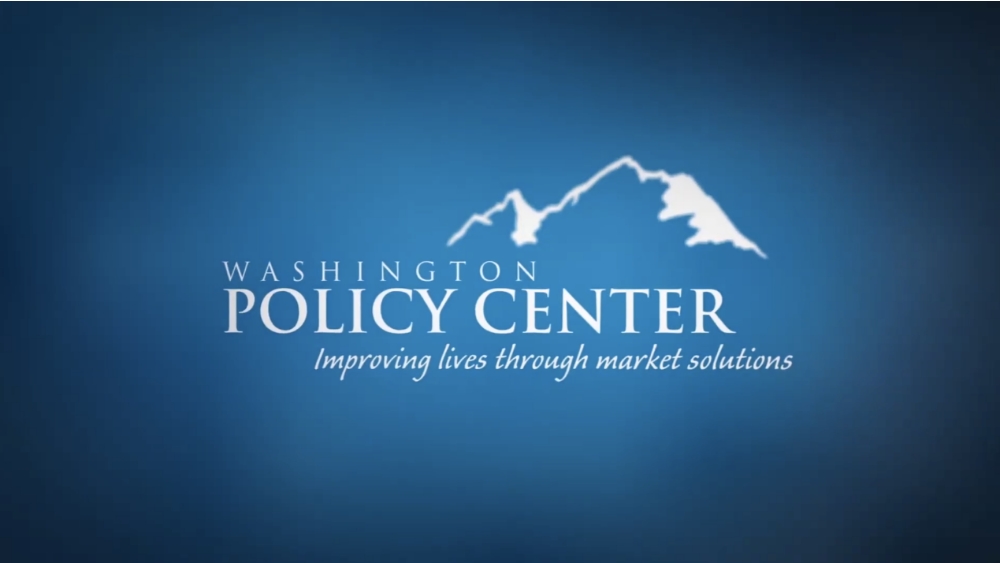Introduction
SB 5603 serves the public interest because it would expand learning opportunities for all Washington public school students by giving them access to online learning programs. This Legislative Memo discusses the benefits of online education and presents the Ten Elements of High Quality Digital Learning recently published by national experts in online learning.
The Problem
One-third of fourth graders and one-quarter of eighth graders in our nation are functionally illiterate. Nearly one-third of students don’t earn a high school diploma. An estimated $1 billion a year is spent each year on college remediation to teach lessons students should have learned in high school. Among the top 30 industrialized nations, U.S. high school students ranked 21st in science and 23rd in math. How can policymakers and lawmakers meet these problems?
Digital Learning Can Be the Catalyst for Change
A Who’s Who of 50 of the nation’s smartest and most effective education reformers have launched Digital Learning Now!, a national initiative to advance policies to accelerate the shift to digital learning in public education. Led by former Govs. Jeb Bush (R-Florida) and Bob Wise (D-West Virginia), proponents released their Digital Learning Report on December 1, 2010. The report is available online at www.excelined.org. The introduction of the report sums up the many benefits of digital learning:
“Digital learning can transform education.
“Technology has the power and scalability to customize education so each and every student learns in his or her own style and pace, which maximizes the chances for success in school. It offers teachers an effective way to overcome challenges and better educate students of all learning needs.
“Digital learning is the great equalizer. It holds the promise of extending access to rigorous high quality instruction to every student across America, regardless of language, zip code, income levels or special needs. New tools and improved services will help schools diagnose and address special learning needs more effectively and efficiently.
“Digital learning is a proven method. For more than a decade, corporations, the military, and higher education have used multiple modes of instruction to create a rapid and efficient path to mastery. In some countries, digital learning is already an integral part of the education system. In the U.S. an increasing number of K-12 school models are utilizing the best of online and blended learning. The fact is digital interaction and learning through social media, the Internet, and mobile devices are a way of life for most teens everywhere except in education.
“With digital learning, students will learn more, teachers will be provided new tools and skills, and schools will be more productive.”
Rocketship Education, founded in 2006, are California charter public schools which operate only with government funding. Rocketship charter public schools have transformed the elementary school model by using “blended” or “hybrid” classrooms which use both teachers and computer-assisted instruction. Two Rocketship elementary schools in San Jose, Calif., serve 1,000 students; 90 percent of them are low-income, and 70 percent of them speak English as a second language.
In 2007, one year after their school opened, students at Rocketship Mateo Sheedy Elementary School, scored 886 on California’s Academic Performance Indicator (API), seventh highest in the state for low-income elementary schools. One year later, they scored 926 API, making them third highest in the state and outperforming students at upscale Palo Alto schools.
Students at Rocketship charter public schools spend 25 percent of their time before a computer, receiving individualized, interactive instruction through high-quality computer programs. Teachers provide the balance of their instruction.
Rocketship charter public schools have eliminated the achievement gap for its mostly low-income Hispanic children. They have also saved $500,000 in staffing costs, money which has been used to pay teachers more and provide them with more professional development.
Specific Recommendations for Lawmakers and Policymakers
Govs. Bush and Wise have released their “Ten Elements of High Quality Digital Learning” to help lawmakers identify policies “that will integrate current and future technological innovations into public education.” Below is a list of the Ten Elements with specific policy changes states should implement to meet these goals.
1. Student Eligibility: All students are digital learners
- State ensures access to high-quality digital content and online courses to all students.
- State eliminates barriers to access, such as previous attendance in public school, which only limits, delays and diminishes opportunities for learning.
2. Student Access: All students have access to high-quality digital content and online courses
- State does not restrict access to high-quality digital content and online courses with policies such as class size ratios and caps on enrollment or budget.
- State does not restrict access to high-quality digital content and online courses based on geography, such as school district, county or state.
- State requires students to take high-quality online college or career-prep course in order to earn a high school diploma.
3. Personalized Learning: All students can customize their education using digital content through an approved provider
- State allows students to take online classes full-time, part-time, or by individual course.
- State allows students to enroll with multiple providers and blend online courses with onsite learning.
- State allows rolling enrollment year round.
- State does not limit the number of credits earned online.
- State does not limit provider options for delivering instruction.
4. Advancement: Students progress based on demonstrated competency
- State requires matriculation based on demonstrated competency.
- State does not have a seat-time requirement for matriculation.
- State provides assessments when students are ready to complete the course or unit.
5. Content: Digital content, instructional materials, and online and blended learning courses are high quality
- State requires digital content and online and blended learning courses to be aligned with state standards or common core standards where applicable.
6. Instruction: Digital instruction and teachers are high quality
- State provides alternative certification routes, including online instruction and performance-based certification.
- States provide certification reciprocity for online instructors certified by another state.
- State creates opportunity for multi-location instruction.
- State encourages post-secondary institutions with teacher preparation programs to offer targeted digital instruction training.
- State ensures that teachers have professional development or training to better utilize technology and before teaching an online or blended learning course.
7. Providers: All students have access to multiple high quality providers
- State has open, transparent, expeditious approval process for digital learning providers.
- State provides students with access to multiple approved providers, including public, private and nonprofit.
- State treats all approved education providers—public, chartered, not-for-profit, and private—equally.
- State provides all students with access to all approved providers.
- State has no administrative requirements that would unnecessarily limit participation of high-quality providers (e.g., office location).
- State provides easy-to-understand information about digital learning, including programs, content, courses, tutors, and other digital resources to students.
8. Assessment and Accountability: Student learning is the metric for evaluating the quality of content and instruction
- State administers assessments digitally.
- State ensures a digital formative assessment system.
- State evaluates the quality of content and courses predominantly based on student learning data.
- State evaluates the effectiveness of teachers based, in part, on student learning data.
- State holds schools and providers accountable for achievement and growth.
9. Funding: Funding creates incentives for performance, options and innovation
- State funding model pays providers in installments that incentivize completion and achievement.
- State allows for digital content to be acquired through instructional material budgets and does not discourage digital content with print adoption practices.
- State funding allows customization of education including choice of providers.
10. Delivery: Infrastructure supports digital learning
- State is replacing textbooks with digital content, including interactive and adaptive media.
- State ensures high-speed broadband Internet access for public school teachers and students.
- State ensures all public school students and teachers have Internet access devices.
- State uses purchasing power to negotiate lower cost licenses and contracts for digital content and online courses.
- State ensures local and state data systems and related applications are updated and robust to inform longitudinal management decisions, accountability and instruction.
A list of organizations offering strategic and technical support to state leaders is provided at the end of the Digital Learning Report. The report concludes with a list of “Things State Leaders Can Do.” These include consulting resources at Keeping Pace 2010, updating surveys of student access to technology, and holding a digital learning summit like the one recently held in Virginia. Digital Learning Now! will then release a Report Card on Digital Learning, giving details about state-by-state progress, in October 2011.
Govs. Jeb Bush and Bob Wise have outlined a strategy for integrating digital learning into public education. Policymakers and lawmakers across the nation can improve public schools significantly by following the roadmap laid out by Digital Learning Now!
Download a PDF of this Legislative Memo here.
Liv Finne is Director of the Center for Education at Washington Policy Center, a non-partisan independent policy research organization in Washington state. Nothing here should be construed as an attempt to aid or hinder the passage of any legislation before any legislative body.




